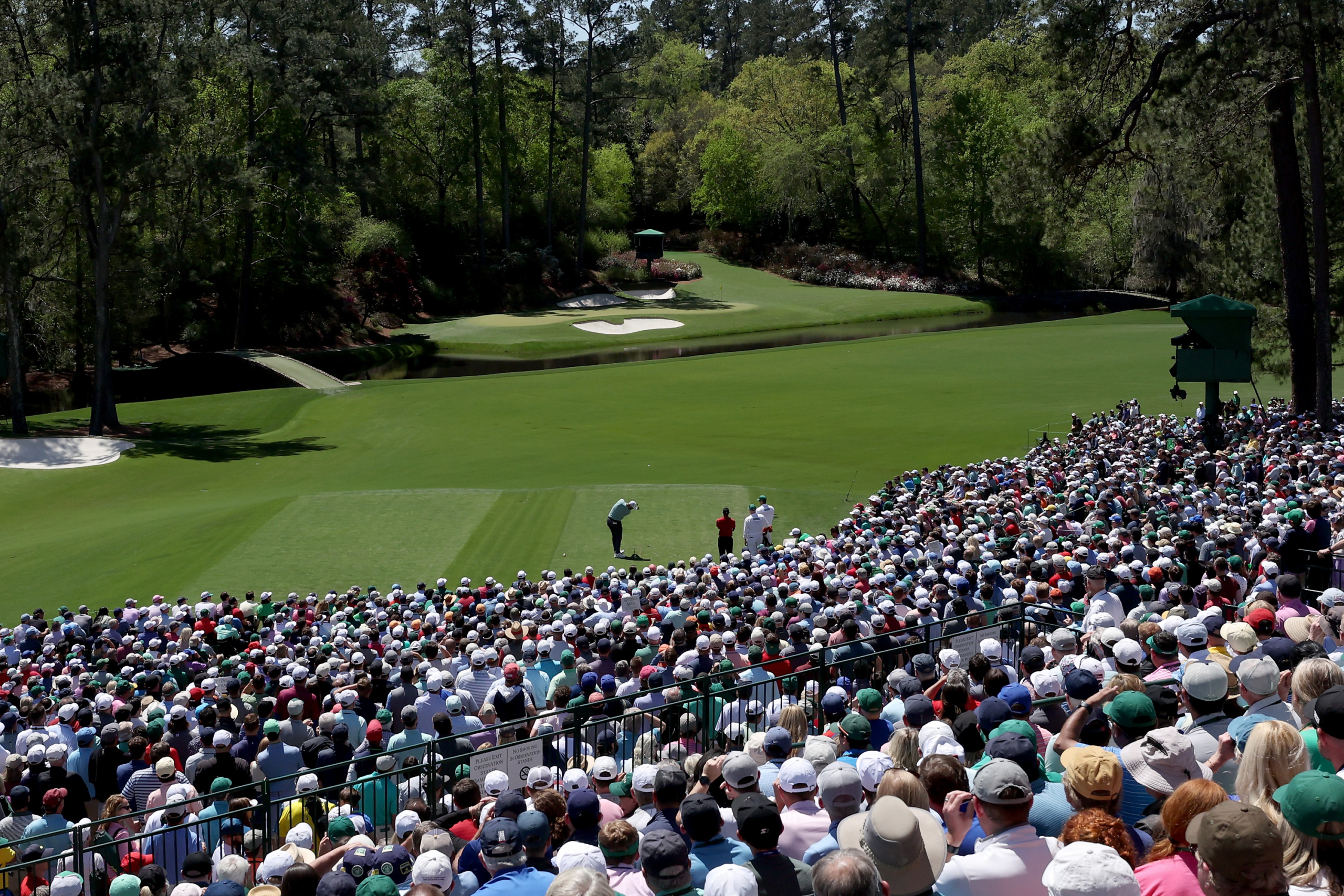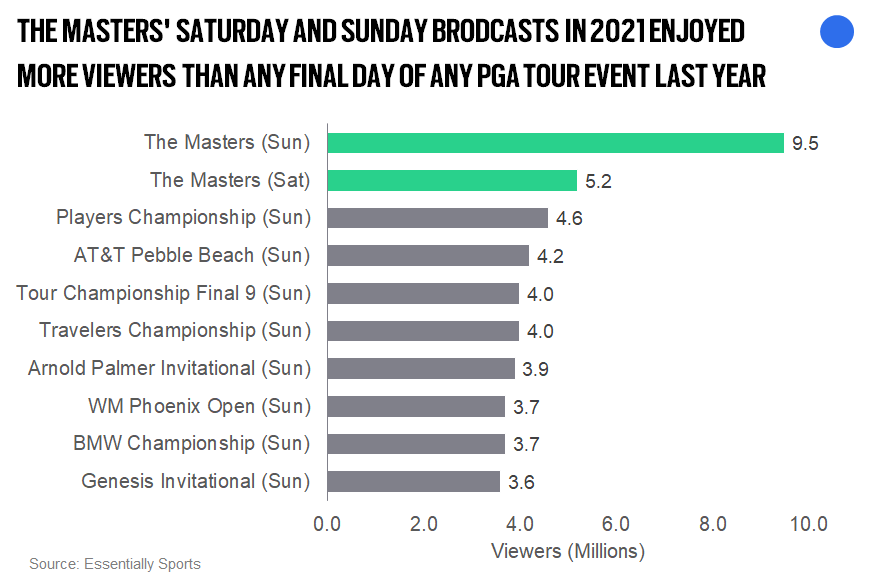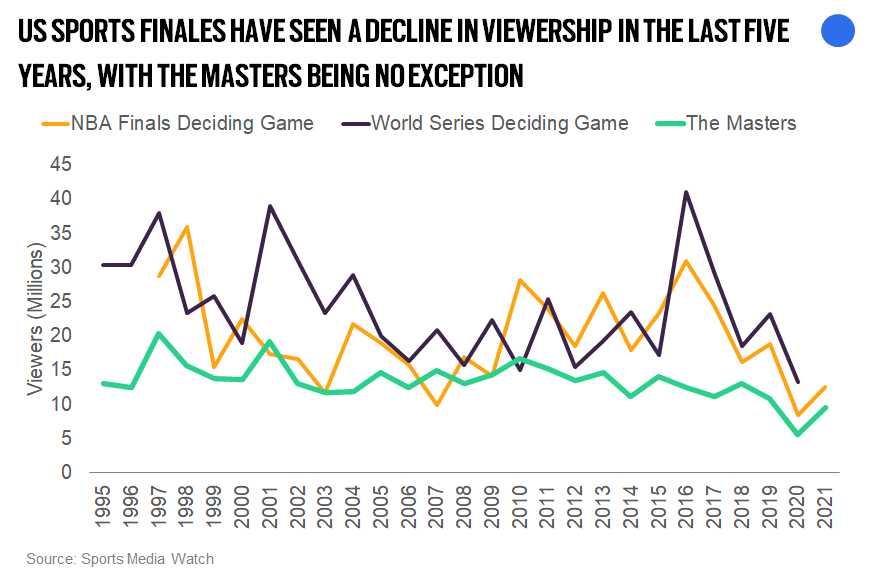Thought Leadership
Mastering The Art of Fan Connection
10 MIN READ
Thought Leadership
Inspired by what you’re reading? Why not subscribe for regular insights delivered straight to your inbox.
The stunning, spine tingling backdrop of Augusta National, the unique tradition and the coveted green jacket, the inevitable drama of Amen Corner, and a truly unique field of past champions and today’s elite: these factors all combine to make The Masters etched in stone for the golfing fraternity, and a must watch for the broader sports enthusiast seeking their first major fix of the season.
Ahead of this year’s event at Augusta National we have taken a closer look at how the Masters leverages significant investment in their owned and operated digital properties to connect with global fans.
Masters Sunday was the most watched golf broadcast in 2021 in the US with nearly 9.5 million people tuning in, while the Saturday broadcast was the fourth most viewed golf broadcast with just over five million viewers. A viewership that is double the PGA Tour’s flagship event, and fifth major; The Players Championship, in exactly the same time zone is indicative of the unique pull Augusta National has on the more transient sporting eyeballs.
How has the Masters managed to sharpen its elbows in the attention economy and how does it continue to inspire, excite and engage this valuable audience? Golf’s Majors are steeped in history, but compared to The Open and the 150th Anniversary celebrations this year, The Masters is a relatively new entrant in its 88th year. It does however have a trump card unique to the Majors, and that is Augusta National. I’m not referring to the uniqueness of the golf course, although the azaleas are undoubtedly a draw for the sports/gardening crossover and don’t get me started on the greens! I’m referring to the fact that the Masters returns to the very same destination every year.
Course connection
The Masters has and will always be played at Augusta National and the consistency of venue is a powerful contributing factor in the popularity of the event and helps it to maintain its place as the most viewed golf major. Every year fans are given the opportunity to witness Augusta and all it has to offer; this consistency enables fans to develop long term affiliations and connections with the course. Fans can evolve their own understanding of the challenges and opportunities that the players are faced with and where the critical holes and likely turning points might lie. There is not a sports fan on the planet that would fail to relive past drama from Amen Corner.
This is something that is so incredibly unique to The Masters. For while the other majors are played on the very best courses in the world – and it is a real treat for the core golf fan to see a diverse selection of such iconic masterpieces from the best architects past and present – the fact that they change year to year doesn’t allow the more transient fan to form long-term connections and such a compelling reason to watch.
The downward viewership trend facing US sports biggest finales
A look at the traditional linear viewing figures of the climaxes of three of US sports biggest sporting competitions since 1995 shows a significant downward trend in the number of viewers who are watching the conclusion of these events. In fact, since the Masters viewing audience peaked at 20.3 million viewers in 1997 the tournament has seen a 53% decrease in its viewership to the 9.5 million viewers it had for last year’s final round. This downward trend also plays out in the NBA finals and baseball’s World Series that are also reporting noticeable drops in viewership in recent years. Even the Super Bowl despite generally maintaining very high viewing figures has seen a decline in viewership of nearly 20% since peaking in 2015.
This data chimes with insights shared by sports properties and media agencies around the globe. The dichotomy at the core of this is that while live rights make up the lion’s share of revenues (75-85%), the average sports fan is only watching circa 55% of sports content in real time.
Commercial success in sport is ultimately driven by the passion of fans – the number that follow and the extent to which they care. To earn their passion, sport must both recognise and emphasise that it is truly differentiated from other forms of entertainment. Sport is so unique and exciting because it is unscripted, it creates authentic narratives that appeal to our natural instincts about people, success, failure and endeavour.
Sports properties must do everything they can to amplify this key point of differentiation, leverage their owned and operated channels to drive fans back to the athletic brilliance and unscripted novelty that only sport can offer.
The Masters, relative to its golfing counterparts has another significant advantage in this realm, again it is a function of the venue. Producing a Golf Product is really challenging. Operating on the equivalent of 350 football pitches with 140 athletes roaming around is a quantum leap in technology terms relative to mapping 22 footballers inside a stadium! Making technology and infrastructure investments at Augusta National presents a significantly more compelling ROI and business case than those events which might not return to a given course for a decade or two. Augusta National has absolutely doubled down on this fortuitous competitive advantage and invested significantly in technology that has elevated digital expectations for fans in the sport.
Trail blazing with every shot technology
For an event as traditional and exclusive as The Masters it was perhaps surprising when Augusta National embraced digital technologies and launched the enhanced MyGroup feature in 2020. The app provides fans with unprecedented, personalised, anytime, anywhere access to the action with live updates of every shot, from every hole, from every player at your fingertips.
The app allows fans to follow the action and connect with the story, providing fans with the opportunity to customise their Masters experience should they want to follow a particular player or unfolding narrative on demand, fostering increased levels of connection through greater access to the story that is of most interest and importance to the individual fan.
Conclusion
There are few sporting events with the heritage and tradition of the Masters, but as we are seeing history isn’t enough on its own to capture and maintain the attention of fans. The proactive approach The Masters has taken to transform digitally in order to connect and stay relevant to a wider audience deserves praise and is a compelling blueprint in personalisation for other rights holders seeking to unlock greater commercial value through enhanced fan connection.
If you would like to find out more about our fan connection services please get in touch with Dan Zelezinski.
You can see an example of our fan connection work in golf here.





